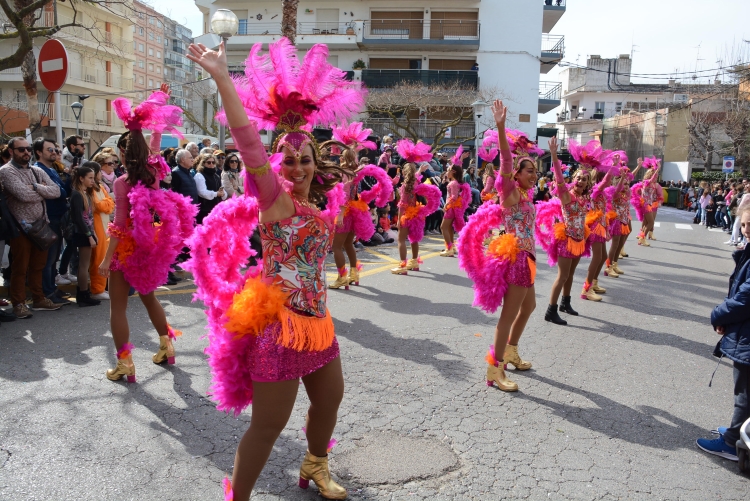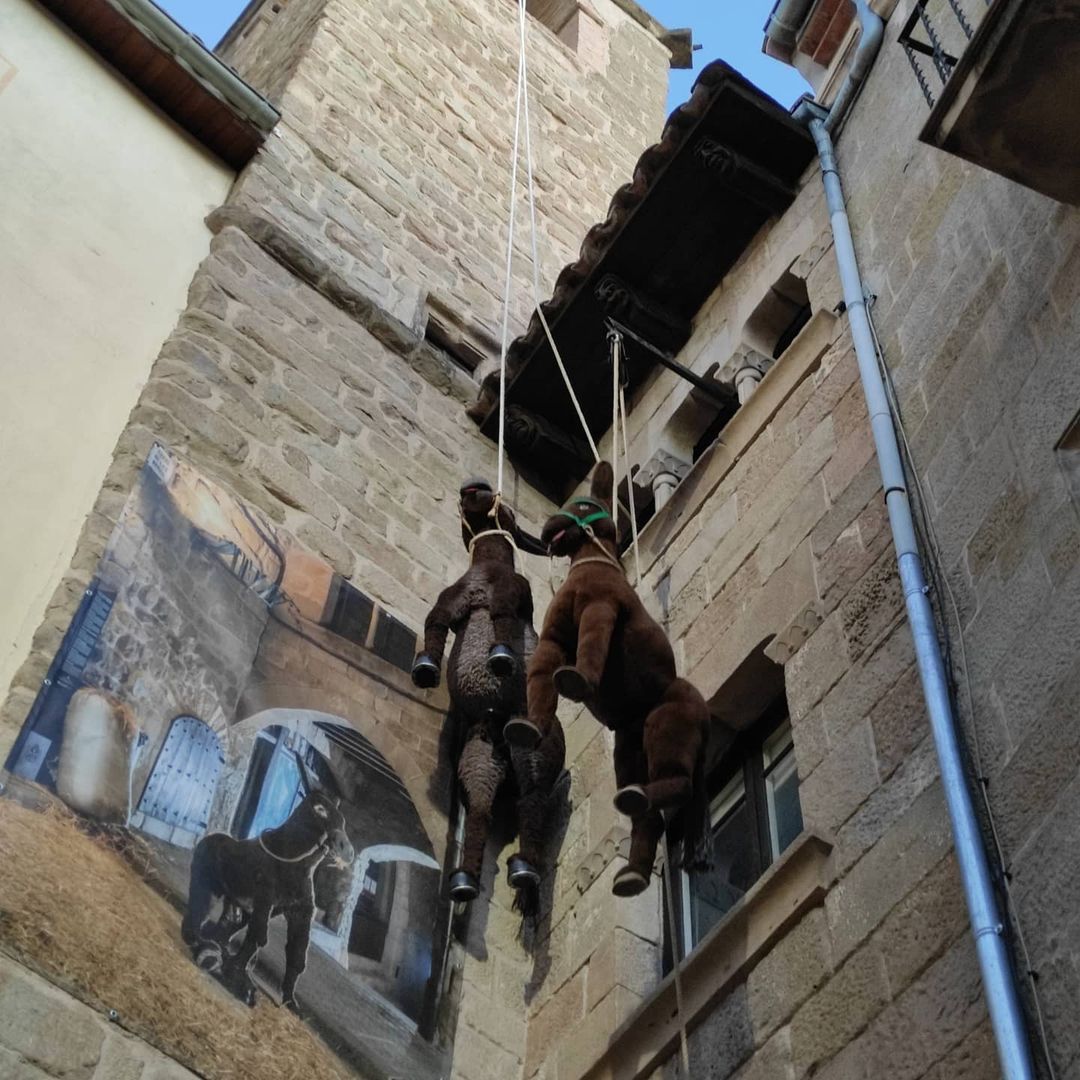Carnival 2022 in Catalonia: where and when to celebrate?
Towns across the territory prepare for first festivities since Covid-19 while others postpone activities

Catalonia is gearing up for the first Carnival celebrations since the Covid-19 pandemic first broke in 2020. Now, cities and towns across the territory are scheduling in-person events including Carnival parades, although some have been canceled or postponed.
In February 2020, Carnival celebrations were some of the last large events held before the state of alarm was declared on March 14, 2020. Last year, celebrations were canceled or held online, but this year authorities gave the go-ahead to plenty of in-person activities.
The main places in Catalonia to celebrate Carnival, the seaside towns of Sitges and Vilanova i la Geltrú, both south of Barcelona, have already announced their plans for the festive period.
In Sitges, police expect up to 300,000 people throughout the week, with Carnival parades changing their schedule and route. This year, around 1,600 participants on over 40 floats will be obliged to wear a face mask.
The reopening of the nightlife sector on February 11 means that Vilanova i la Geltrú’s town council will allow night parties to take place once again.
Key dates and what to eat
Carnival in Catalonia is not a one-day event — the territory goes full-on for a week with parties and special dishes.
Thursday February 24
The party usually kicks off in Vilanova i la Geltrú with the ‘La festa de la merengada’ – or, in English, the meringue war. However, this year the event has been canceled due to the pandemic.
In Sitges, the first day of festivities will see the town welcome the King of Carnestoltes, or Carnival, at the Plaça de l’Ajuntament square.
A similar event will be held in the central Catalonia town of Solsona welcoming the king of the party that will take over the village for over a week. The Catalan capital will also host the ‘L’Arribo’, the arrival in English, and a parade that will attract hundreds of the city’s residents.
Thursday in Catalonia is also known as ‘Dijous Gras’ or Fat Thursday in English, a day where indulging in fatty foods is allowed and even encouraged. Some will eat ‘butifarra d’ou’, a white pork and egg sausage made that is typical in Carnival.
Friday February 25
Friday is the day the Carnestoltes king is welcomed in Vilanova i la Geltrú ahead of a ‘diables’ or devils walk with fireworks.
Friday is also a key date for Carnival in schools across Catalonia as thousands of children dress up in costumes, something. Costume shops are looking forward after last year’s cancelations.
Carnival ings will also visit some schools, such as in Sitges, where he will also go to the public market.
Saturday February 26
Barcelona will celebrate its main Carnival parade on Saturday which hundreds of people are expected to attend, in addition to some smaller ones throughout the city.
On Saturday, Sitges will also dress up but not for a parade. The seaside town will host a race where residents will be competing from moving elements – including beds! – instead of proper vehicles.
The ‘Mata-ruc d’honor’ in Solsona will mark the official Carnival start in the town. Residents of the central Catalan village are known as ‘mata-rucs,’ donkey-killers in English, so to mock the name they are given, a famous Catalan personality will become the ‘mata-ruc’ of honor for the year. This person will be in charge of hanging a fake donkey from a bell tower.

The northern seaside town of Blanes will also celebrate its parade on Saturday after canceling last year’s edition because of the pandemic. This year, the party will finish with a concert and dancing.
Sunday February 27
Sitges and Vilanova’s big Carnival day is on Sunday. In Sitges, children will enjoy the town’s first parade, but the Debauchery Parade for older revelers will start at 7 pm local time.
This is one of the biggest parades in Catalonia, with thousands of people going to the town to enjoy the party and the dances. In fact, hotels are already preparing for the event with 90% of hotel rooms booked.
In Vilanova i la Geltrú, ‘La Comparsa’, will start at 9 am with dozens of people in pairs walking around the town throwing sweets. At 11 am, the parade will reach Plaça de la Vila square where participants will have a big candy fight.
This year, the fight will only be open to those that are part of the parade due to Covid-19, but local TV will broadcast the event. For this occasion, organizers will pay up to €4.5 a kilogram of candy after the shortages of sugar, paper, and plastic increased the price by around €2 per kilo.
Monday February 28
Monday is just a day to relax. Despite Carnival celebrations still going on, the main events have either already taken place or everyone is getting ready for Tuesday.
Tuesday March 1
The Extermination Parade is another one of the most famous parades in Catalonia. Sitges will once again host a child-friendly version at 12 pm and another one for adults at 7 pm.
In Vilanova i la Geltrú, the ‘Comparses del Viladot’ will start at 7 pm. This is one of Catalonia’s most colorful parades as thousands of thrown sweets leave a carpet of candy on the floor. This year, unfortunately, supply chain issues mean the council was only able to procure white candy wrappers, leaving the color behind.
On March 1, it also marks another key Carnival date in some towns, such as Vidreres, near Girona, and Ponts near Lleida. These two places are the main spots to enjoy another traditional food plate known as ‘ranxo’, a big vegetable and meat stew made from the ingredients provided by town residents.
Wednesday March 2
The only way to round off a Catalan Carnival is with the 'Burial of the Sardine' ritual on Ash Wednesday. This mysterious, somber ceremony takes place all across Catalonia in places such as Barcelona, Sitges, or Vilanova i la Geltrú. In Solsona, residents will remove the fake donkey they placed on the bell tower on Saturday.
This coincides with the beginning of the traditional Lent period of abstinence, which after seven days of good times and gluttony, some may be thankful to see.
Carnival across Catalonia
Carnival in Catalonia is not usually only celebrated in these towns and cities. In fact, there are hundreds of activities that have been planned but some have been postponed for health reasons.
Towns in Costa Brava’s Baix Empordà county, such as the seaside village of Calonge i Sant Antoni, have rescheduled the party in April.
Calella, a coastal town north of Barcelona, has canceled their entire parade because there were not enough participants, while in the city of Reus, near Salou, authorities have also canceled the parade but will organize other small activities.